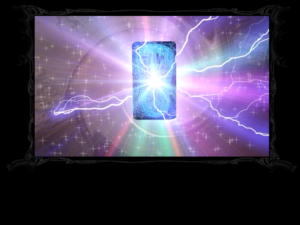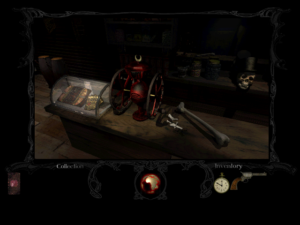The Forgotten: It Ends
 I seem to have finished The Forgotten. This happened quite abruptly.
I seem to have finished The Forgotten. This happened quite abruptly.
Adventure games are often short. I remember completing Myst in more or less a single sitting. They don’t usually leave quite so much unresolved as this game, though. The docs describe this as the first chapter of a multi-part story, but it doesn’t even seem complete enough to be a chapter. It’s more like a story told by someone who stops in mid-sentence to take an important phone call. There are things that are clearly clues for puzzles that never appear, as if they had to cut things out to meet a deadline. The very first thing that happens in the game is that you find a box containing a rusty pistol and a broken pocketwatch, together with a note stating that you’ll know what to do with them when the time comes. Neither is ever used. I suppose that the entire game is just the first act, and Chekov’s rule talks about the third, but still.
It seems to me that there’s something like the opposite of a self-fulfilling prophecy here. (Self-denying?) The attempt at episodic narrative yields an incomplete and unsatisfying game, which results in bad reviews, low sales, and ultimately the cancellation of the project before any more episodes can be made.
By the end, I’d briefly held four cards, but not really gotten a chance to use any of them: two were acquired at the very end, and one had to be abandoned to solve a puzzle immediately after obtaining it. The game’s puzzles were mostly mechanical things of the sort that any post-Myst graphic adventure would have. I also learned, from the journals scattered about in lieu of characters, something of what other people had done with their cards: at least one deck provided the power of time travel, and Amelia Earhart apparently had a “flight deck”. Yes, Amelia Earhart figures into the plot. So does Anastasia Romanov. Using people who disappeared gives the authors an excuse to not have them around where the player can interact with them.
Like I said, constrained and linear. The game provides lots of scenery that you can look at, but relatively little that you can interact with, and basically no way to affect game state other than the ways that are necessary to complete it. In short, it’s a typical post-Myst graphic adventure.
 Comments(2)
Comments(2)